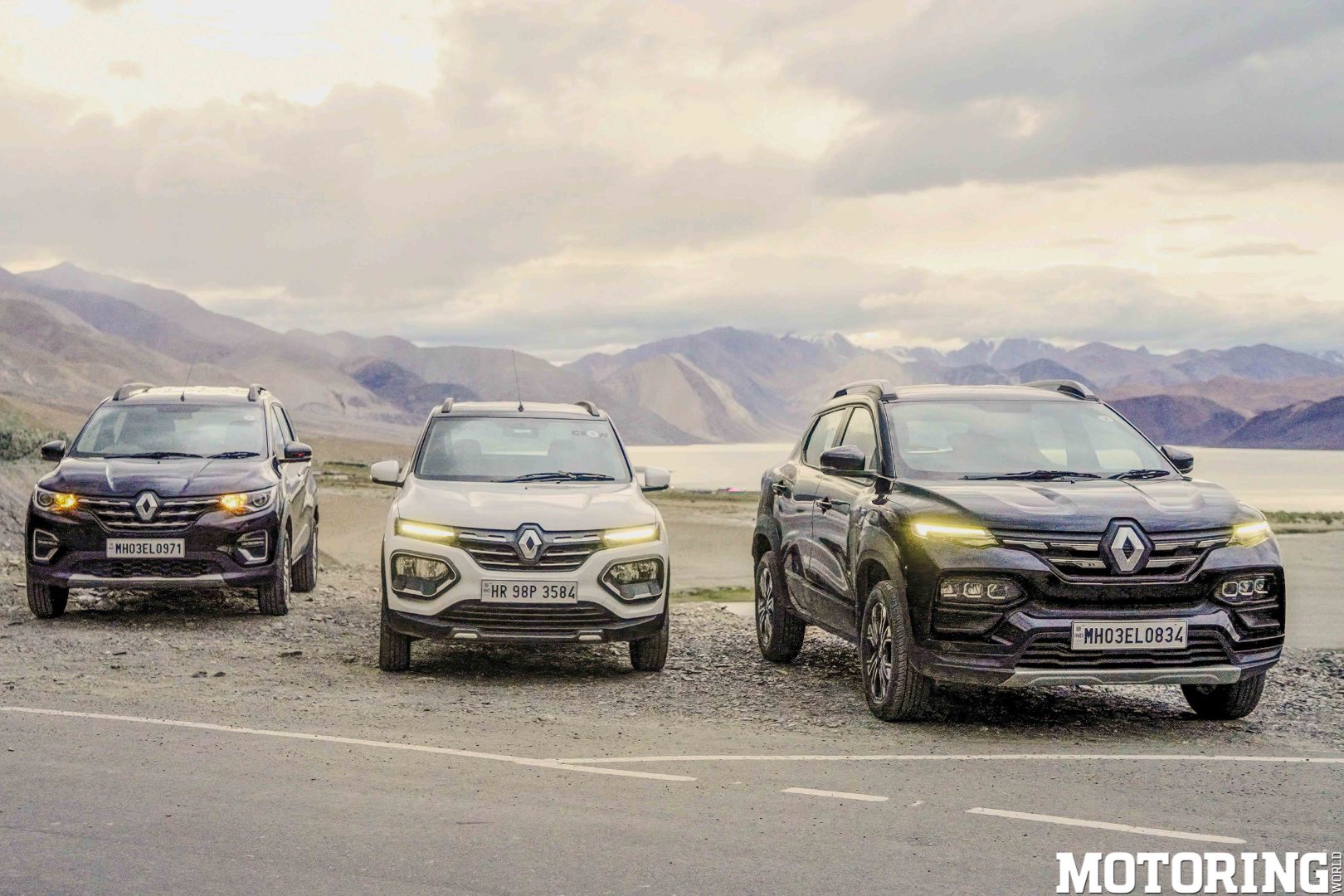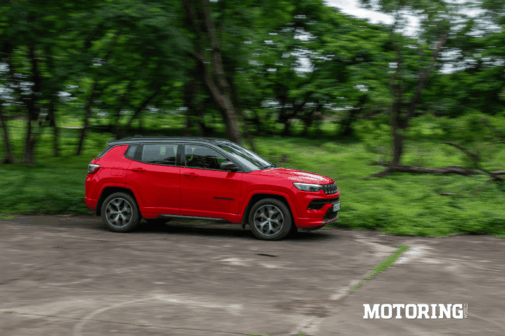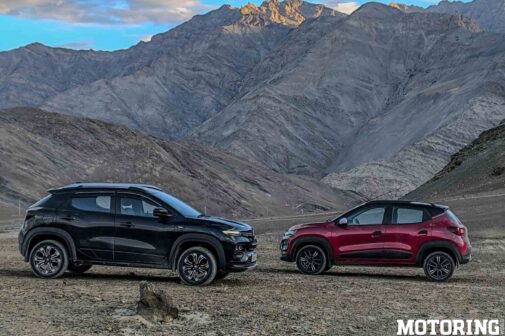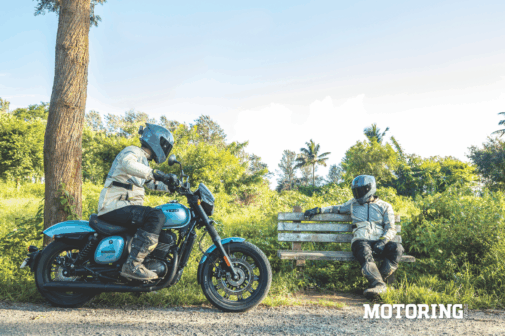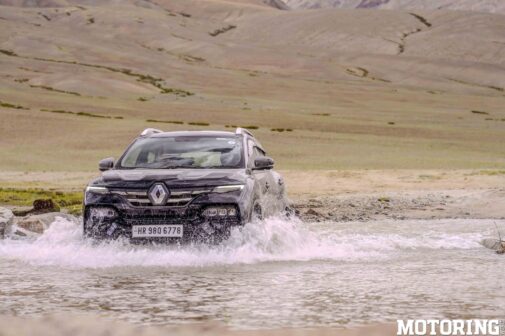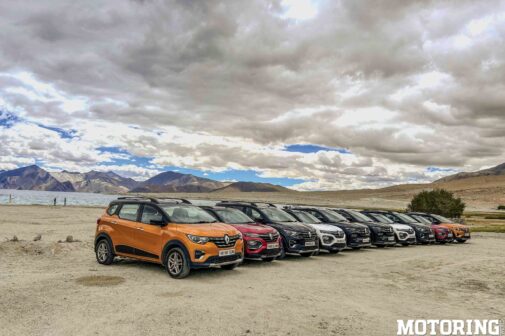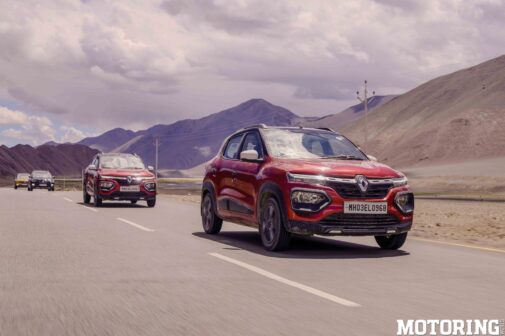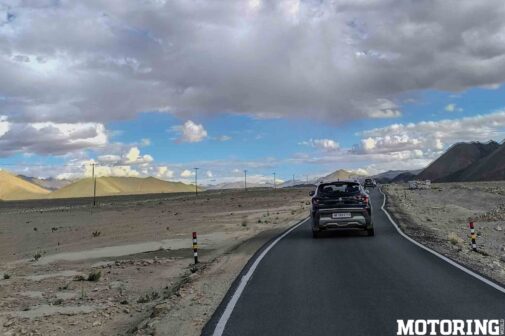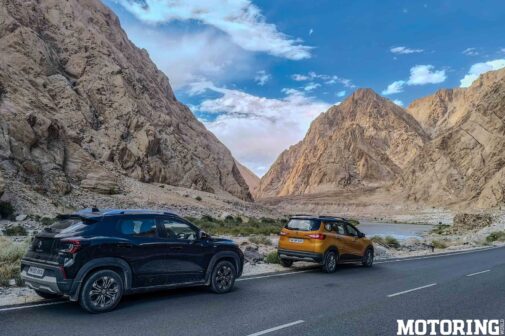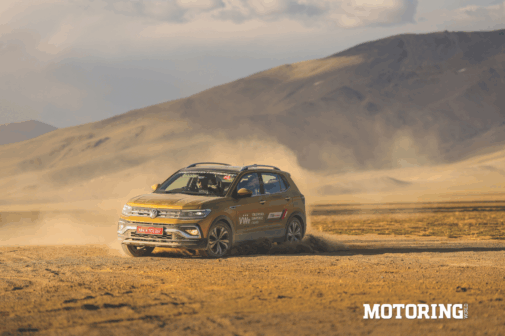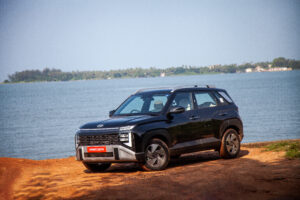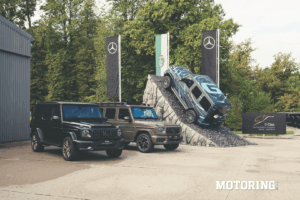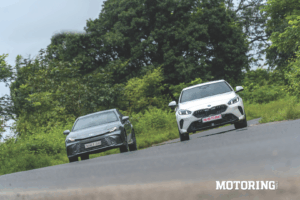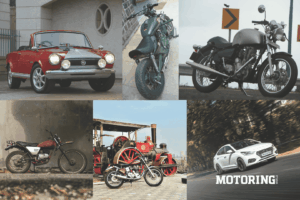Ladakh, the land of high passes, nestled in the Himalayas, is a mosaic of rugged mountains, vast deserts, and serene lakes. It was a trip that was waiting to be ticked off a bucket list for a long time now. The crisp mountain air, although thin, carries with it whispers of traditions and cultures as old as the mountains themselves. Monasteries perched on the edges of cliffs, colourful prayer flags adorning every nook and corner, while the friendly faces of Ladakhi people smile at you from their warm little homes. It is a different world altogether, one that welcomes us with a warm embrace as everything else freezes in time. I had always imagined that my first journey here would be on two wheels, but the number of wheels doesn’t really matter, does it?
Coming to what brought us to Ladakh, Renault India had invited us to take part in an experiential drive of its entire vehicle lineup in one of the most challenging driving conditions in the world. We are always up for a good challenge, so off we went into the lap of the Himalayas to drive a few cars and see a few sights. Upon arrival in Leh, we were told to rest and acclimatise ourselves, or else we could fall prey to the ill effects of the sudden change in altitude. I managed to sit tight for the first day, but that was about all the self-control that I had. On the second day, I set out for the market and explored all the colourful bylanes where the locals were selling their beautiful wares, stopping now and then to sample the simple but flavourful Ladakhi cuisine at small eateries along the way. No better way to acclimatise than that, I say.
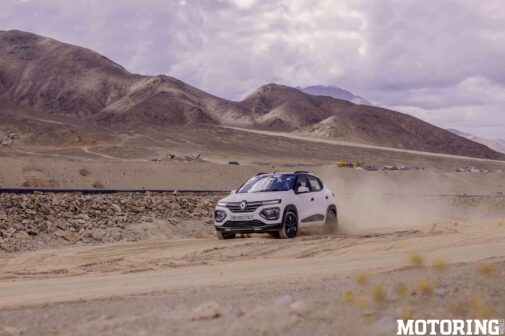
That afternoon, we were handed the keys to our respective cars, and we set out on a small drive to a few nearby spots, just so that we could get used to the cars and how they behaved in the high altitude. Out of the three cars in their lineup (Kiger, Kwid, and Triber), I was allotted the Kiger, which was a 1.0-litre turbo-petrol with a 6-speed manual gearbox. I soon realised the effects that the scarcity of oxygen can have on a turbocharged engine as the car was starting to feel strained. I was doing fine though. The other two cars, the Kwid and the Triber, were also experiencing a loss of power, but that was not as evident as on the Kiger. Both feature the same 1.0-litre petrol engine with a 6-speed manual gearbox and make a good case for smaller-capacity engines out in the wild.

The drive was flagged off the next morning, with the first leg of the journey taking us all the way to Pangong Tso from Leh. We set off in an unhurried fashion, with around 250 km to go, making it a rather relaxed drive as we enjoyed the scenery and the cold mountain air keeping us fresh and perky. We did come across a fair amount of traffic on the narrow highway, but it was still so much better than Mumbai. The Kiger that I was driving was pretty comfortable and handled quite well through the winding roads. The only thing that was bugging me was the fact that as we climbed higher, it felt like the power delivery was becoming more inconsistent like it was being slowly suffocated while managing to get a few gulps of air here and there. By the time we reached Pangong Tso, I had made my peace with the car, and it made a final excruciating effort to climb up a slightly steep, rocky incline on the way to where we were being put up for the night. Our time together ended there.
The night was cold, and although we were all layered like Russian nesting dolls, we could feel the temperature drop to zero. My room was right next to a small stream that was burbling through the night, providing me with a soothing ambient noise to fall asleep to. The following day, I woke up to the sun shining right in my eyes and a bit of a headache, which was probably because of the cold. A warm breakfast did the trick (along with an aspirin), and I was ready to hit the road again. The second leg of the journey was from Pangong Tso to Hanle, with a stop at the Rezang La war memorial, for which I was allotted the Triber, which felt more eager in comparison to the weary Kiger, and it felt more comfortable too. But first, we had to make our way to the serene waters of the lake, the banks of which were lined with yellow scooters and other paraphernalia from the movie 3 Idiots which, honestly, seemed to clutter up the place. Moving on, we continued with our drive, stopping at another army-run establishment for sustenance.
The landscape soon changed, and there were fewer vehicles to be seen on the roads, save for a few pickup trucks and Maruti Suzuki Altos (not surprising). We also came upon a group of motorcyclists who crept up on us, weaved through our ranks, and finally sped off into the distance, leaving me with a tinge of regret that I wasn’t part of their ensemble.
I quickly snapped back and consoled myself with the fact that I was also having fun in our convoy of cars, a little more comfortable than the fellows on two wheels probably were, not exposed to the elements and all. We soon reached Hanle, where we had hot chai and pakodas waiting for us. A successful second leg completed, we waited then for the sun to set because the night sky in Hanle is supposed to be perfect for stargazing, and believe me, it sure is.
The third leg of the journey was from Hanle to Umling La and back. As we started the climb, we encountered a light drizzle, and Vikram, one of our lead drivers, said that if it was drizzling here, then it must definitely be snowing up there at Umling La. That would be like the cherry on top, and surely enough, it was snowing when we reached! A layer of white enveloped everything our eyes could see, and not wanting to be snowed in, we decided to head back down. Now, while all this was happening, Renault India hit a milestone by becoming the first car manufacturer to take its entire product lineup to the highest motorable road in the world. The final leg of the journey back to Leh was completed in the Kwid, which saw a bit of spirited driving on my part. It felt pretty lively, mainly considering the power-to weight ratio and the fact that it was breathing better as we descended. As the drive came to an end, I had to look back and say that I enjoyed this journey a little more than I had expected myself to.
Driving in Ladakh is a thrilling experience that mixes the excitement of negotiating difficult terrain with beautiful scenery. The route was filled with winding roads flanked by towering mountains, deep valleys, and glacial rivers, not to mention the hordes of mountain goats, yak, wild Zanskari horses, and even the Tibetan wild asses called Kiang. However, driving in this high-altitude desert does take a good amount of caution and planning, which was taken care of by the Renault India team. There is a genuine risk of altitude sickness, and the roads can be tight with sharp turns and steep inclines. But the rewards are truly immense.
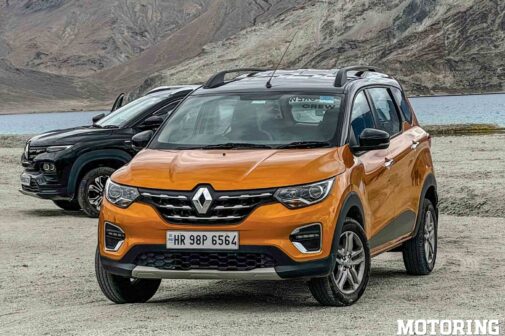
cars with small-capacity engines
The encounters with local communities along the route gave the trip a more cultural perspective. Every stop provided an insight into the rich cultural legacy of the area, from the crowded marketplaces of Leh to the isolated villages along the route. We also experienced the hospitality of the Indian Army, as some of the stops for meals were only made possible by the small cafes run by the army men along the remote highways of the cold desert. And to think that we completed all of this in front-wheel drive cars with small-capacity engines without any drama just goes to show that you don’t need a beastly 4X4 to conquer the challenging terrain and the highest motorable road. All you need is a set of wheels, a willing spirit, and some good company along the way. You’ll make it all the way up.





